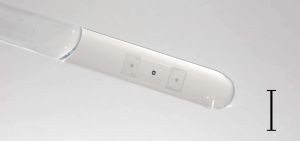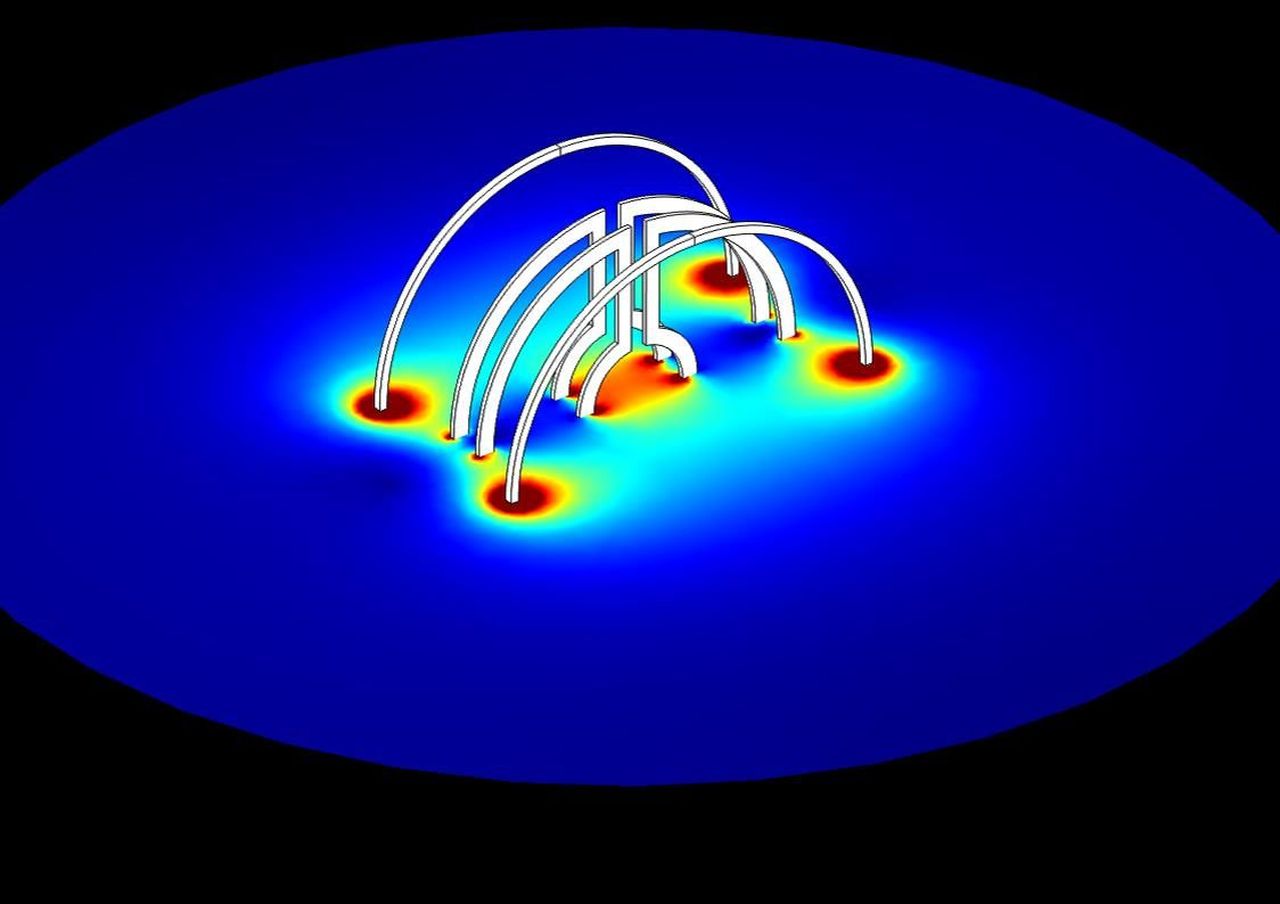In many areas extending from materials sciences to medicine, nuclear magnetic resonance (NMR) is used for detailed molecule-specific investigations. Scientists of Karlsruhe Institute of Technology (KIT) have now succeeded in enhancing the sensitivity of NMR measurements on smallest space. For this purpose, the scientists use so-called Lenz lenses that focus magnetic flux. Among others, medical applications may benefit. The scientists present their method in the journal PLOS ONE. (doi: 10.1371/journal.pone.0182779)
The physical effect of nuclear magnetic resonance (NMR) is used to study molecular properties of matter. The specimen is located in a high constant magnetic field and irradiated with a high-frequency alternating magnetic field. Both magnetic resonance tomography (MRT), a method in medical diagnostics to image the structure and function of tissues and organs, and NMR spectroscopy, a method to analyze the structure and dynamics of molecules in biology, biochemistry, chemistry, physics, and materials sciences, are based on nuclear magnetic resonance. However, research has to cope with the [Textfeld: Five-millimeter NMR tubelet with a Lenz lens. The tubelet is filled with agarose, a polysaccharide, that cannot be detected with conventional NMR systems. (Photo: Nils Spengler/KIT)] challenge of constantly improving the unfavorable signal-noise ratio and, thus, increasing the sensitivity of NMR measurements. “A high sensitivity is indispensable in particular when applying mass- and volume-limited methods or when a high spatial resolution is required,” Professor Jan Gerrit Korvink explains. He is Director of the Institute of Microstructure Technology (IMT) of KIT and heads the “Magnetic Resonance Microscopy and Related Topics” group.
In NMR measurements on small samples, miniaturized high-frequency coils proved effective for the generation and reception of the alternating magnetic field. For mobile applications and further miniaturization, an international team of researchers has now developed a new method to enhance sensitivity on smallest space: They use magnetic lenses, so-called Lenz lenses, to focus magnetic flux of a macroscopic high-frequency coil on a smaller volume and to locally enhance sensitivity. With these lenses named after physicist Emil Lenz, who published the law on changing magnetic flux, magnetic flux of the alternating field cannot only be focused, but also diverted or transformed. In this respect, the effect of these lenses can be compared with that of optical lenses on light beams. Change of the magnetic field induces current in the Lenz lenses made of metal plates or wires in symmetric or asymmetric arrangement. The shape of the lenses guides the induced currents such that the magnetic field is focused.

Five-millimeter NMR tubelet with a Lenz lens. The tubelet is filled with agarose, a polysaccharide, that cannot be detected with conventional NMR systems. (Photo: Nils Spengler/KIT)
With Lenz lenses, sensitivity of measurements in very small spaces, into which conventional NMR systems do not fit, can be increased significantly. Moreover, the lenses work at any field strength. Among others, medical applications can benefit from the use of Lenz lenses, Korvink says: “As the Lenz lenses are not wired, they are particularly suited for implants.” Application might be feasible in brain implants to observe healing of the tissue over longer terms with high resolution or on plasters for the observation of skin cancer. Currently, scientists are exploring further applications, among others in electrical engineering.
Professor Jan Gerrit Korvink, together with Dr. Nils Spengler, Professor Ulrike Wallrabe, Dr. Peter T. While, and Markus V. Meissner, experimentally demonstrated the use of Lenz lenses in NMR measurements and mathematically formulated the underlying principle. The results of the scientists of the University of Freiburg, Trondheim University Hospital, Norway, and KIT are reported in the journal PLOS ONE.
Spengler N, While PT, Meissner MV, Wallrabe U, Korvink JG (2017): Magnetic Lenz lenses improve the limit-of-detection in nuclear magnetic resonance. PLOS ONE 12(8): e0182779. https://doi.org/10.1371/journal.pone.0182779
Being “The University in the Helmholtz Association”, KIT creates and imparts knowledge for the society and the environment. It is the objective to make significant contributions to the global challenges in the fields of energy, mobility, and information. For this, about 10,000 employees cooperate in a broad range of disciplines in natural sciences, engineering sciences, economics, and the humanities and social sciences. KIT prepares its 22,800 students for responsible tasks in society, industry, and science by offering research-based study programs. Innovation efforts at KIT build a bridge between important scientific findings and their application for the benefit of society, economic prosperity, and the preservation of our natural basis of life. KIT is one of the German universities of excellence.

